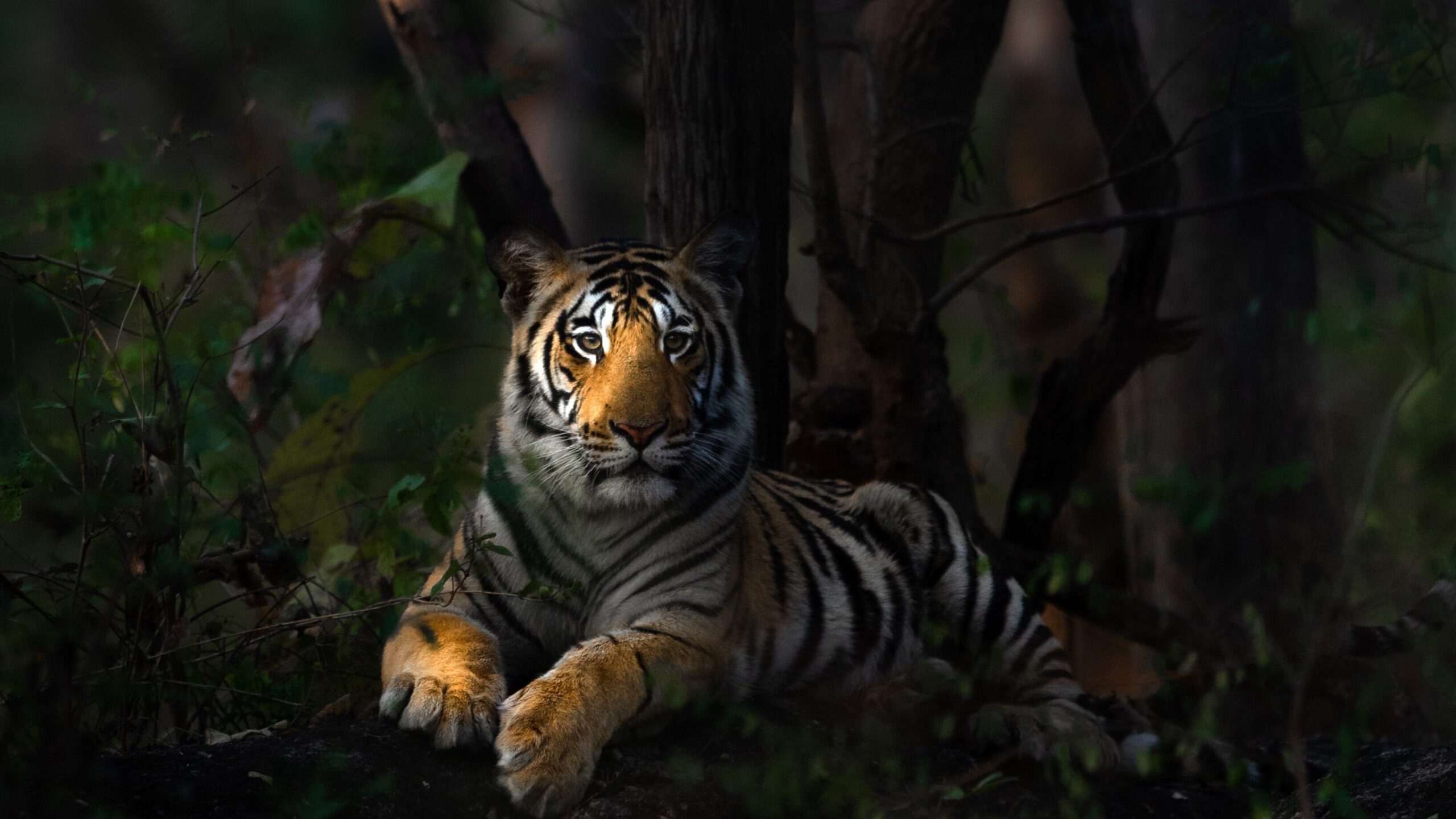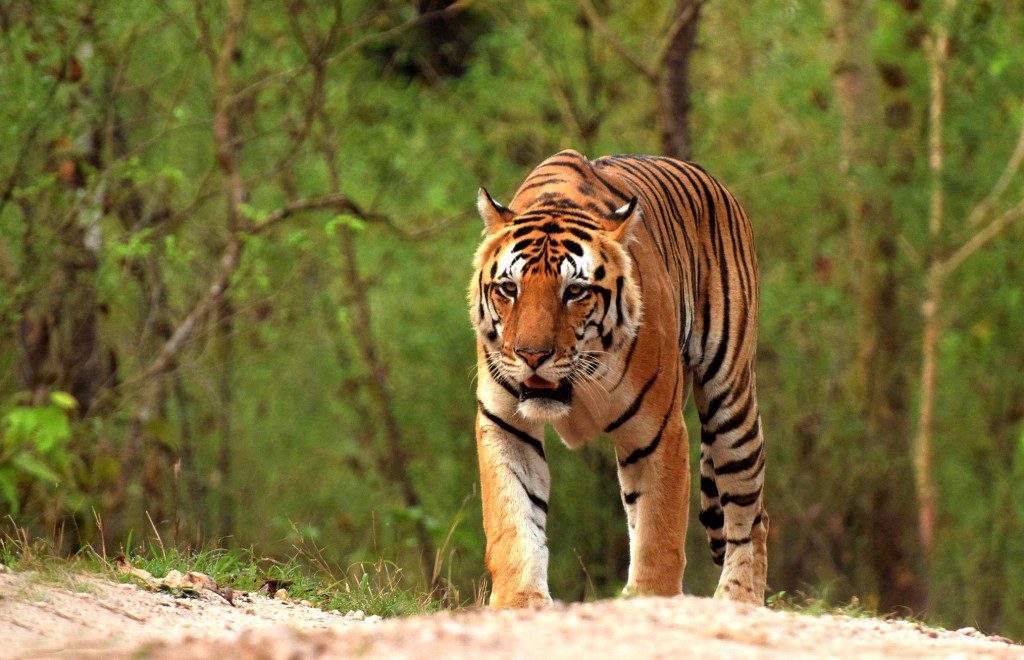The Royal Bengal Tiger (Panthera tigris) is one of the most iconic and powerful animals in India. Its presence itself shows strength, grace and wilderness. Despite their majestic personality, Bengal tigers are endangered and efforts are being made to ensure their survival. This blog will explore the history of tigers in India, as well as their physical characteristics, habitat, diet, and conservation status. Let’s start with some interesting facts about the Royal Bengal Tiger.
Fascinating Facts About the Royal Bengal Tiger
1. Solitary
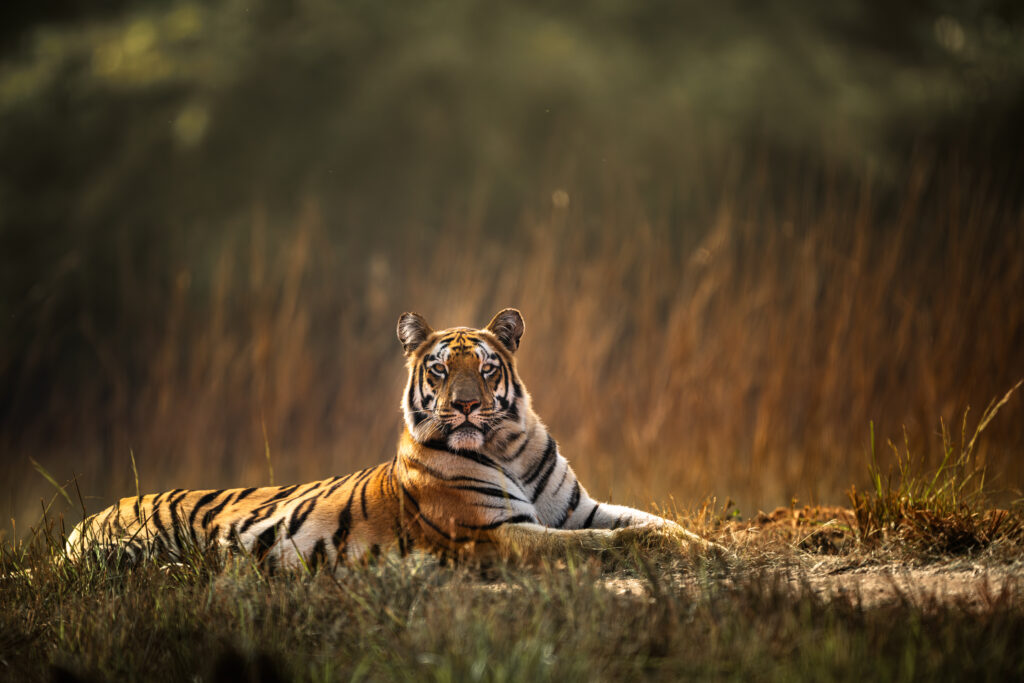
Bengal tigers are solitary creatures. Unlike lions, they do not live in groups. They prefer to roam and hunt alone, marking their territories to keep other tigers away. The only time you will see more than one tiger is when they are mating or a mother with her cubs.
2. Powerful Swimmers
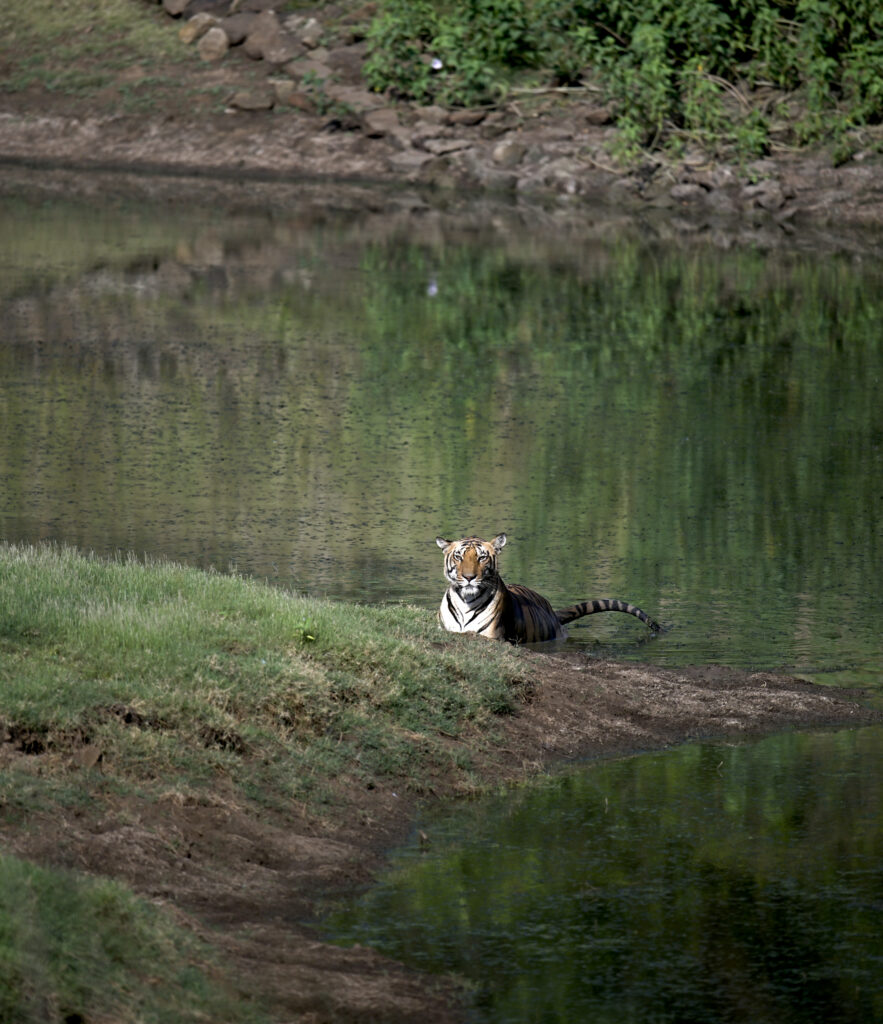
Bengal tigers are strong swimmers and are known to travel long distances in water to hunt or move between islands in the Sundarbans, a mangrove region in India and Bangladesh.
3. India’s national animal
Did you know that the tiger is not only India’s national animal, but the country is also home to over half of the world’s wild tiger Population?
4. Night Vision
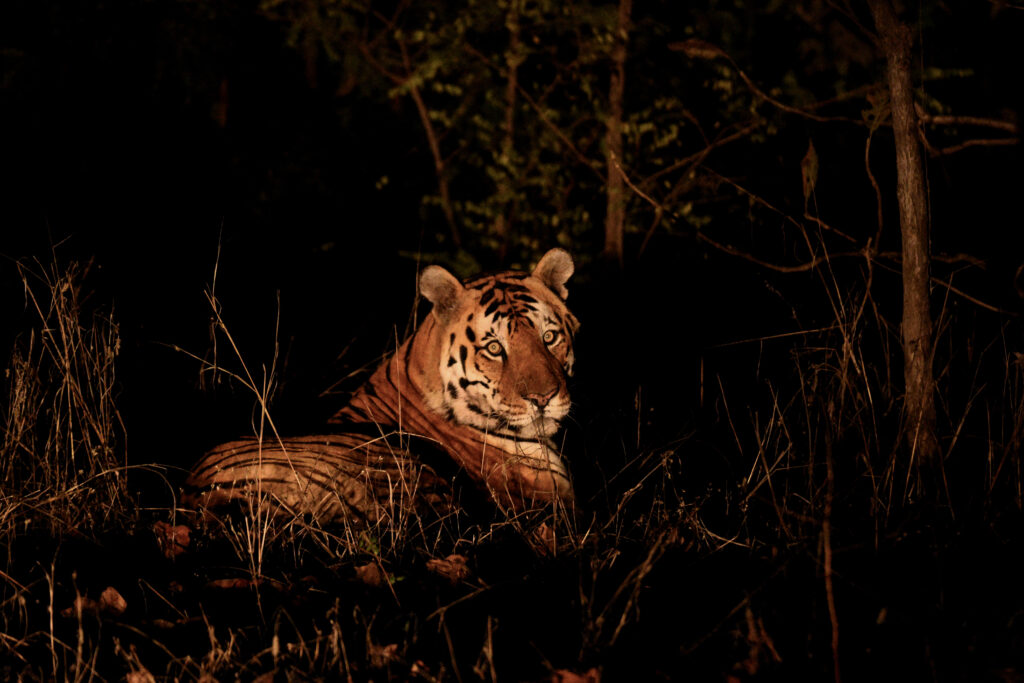
Bengal tigers have excellent night vision, six times better than humans, which allows them to hunt effectively in the dark.
history of tigers in India
Tigers have had a long history in India, going back thousands of years. In ancient Indian art and mythology, tigers were often seen as symbols of bravery and royalty. The tiger also holds a significant place in Hindu mythology. Hindu Goddess Durga is often portrayed as riding a tiger into a battle, signifying power and protection.

However, during the colonial period, tiger hunting became a popular sport, especially among British army officers and Indian royalty. This period saw the rapid decline of tiger populations as hunting trophies became status symbols. By the early 20th century, it was estimated that over 1,00,000 tigers roamed the forests of India. However, due to hunting, habitat loss, and the encroachment of human settlements, tiger numbers began to plummet.
In response to the alarming decline, the Indian government initiated Project Tiger in 1973 (In April 1973, the Tiger was Declared the national animal of India), aimed at conserving and protecting tiger habitats. This was one of the most significant steps taken globally to save the tiger from extinction. Since then, Project Tiger has grown to encompass over 55 tiger reserves across India, helping to stabilize the population, though threats still persist.
PHYSICAL CHARACTERISTICS OF TIGERS IN INDIA
Bengal tigers are easily recognizable because of their striking orange coat, black stripes, and white underbelly. No two tigers have the same pattern of stripes, which makes each tiger unique. These stripes help them blend into the tall grass and dense forests, making them nearly invisible to prey species.
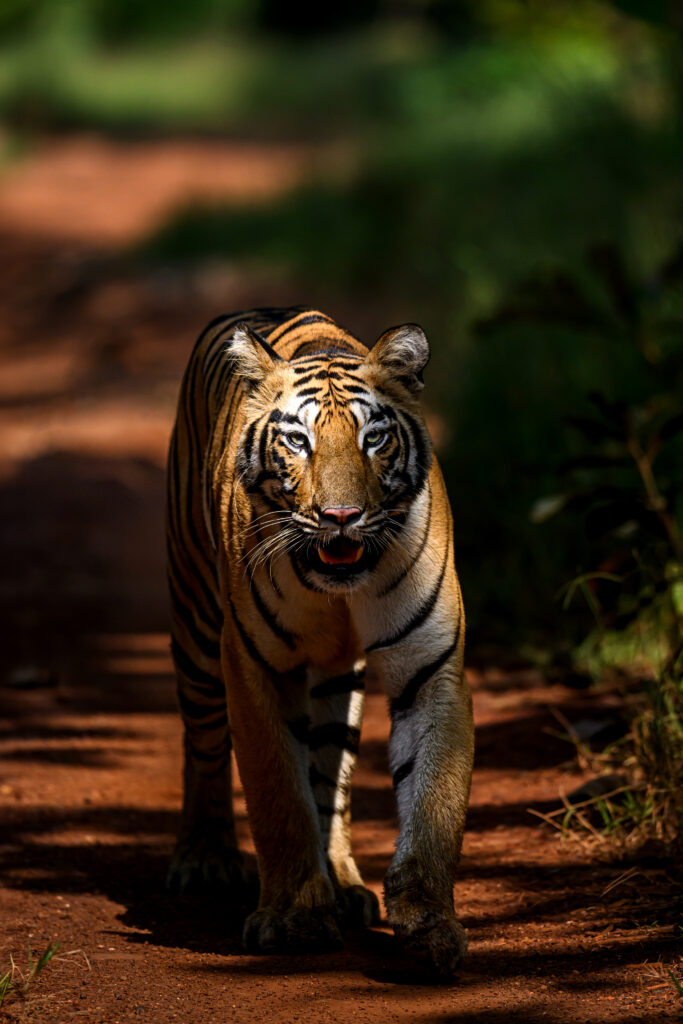
Male Bengal tigers are typically larger than females. They can grow up to 10 feet long, including their tail, and weigh between 200 to 300 kg. Females, on the other hand, are slightly smaller, averaging about 8 to 9 feet in length and weighing between 100 to 180 kg. Their muscular build allows them to take down large prey with ease.
WHERE ARE BENGAL TIGERS FOUND?
Bengal tigers are native to the Indian subcontinent, with the largest populations found in India. Other countries where they can be found include Bangladesh, Nepal, Bhutan and Myanmar. In India, Bengal tigers are mostly found in protected areas such as:
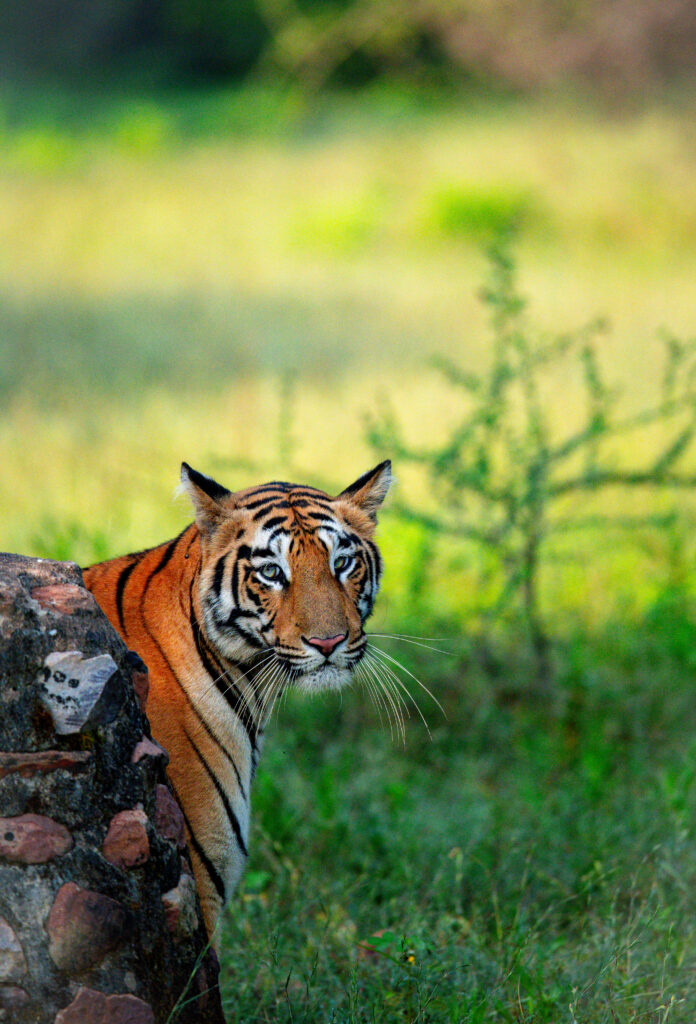
Pench
The Pench Tiger Reserve is located in Madhya Pradesh and is known for its great tiger sightings. It is also well-known for being the inspiration behind ‘The Jungle Book,’ written by Rudyard Kipling.
Tadoba
Tadoba Andhari Tiger Reserve in Maharashtra is one of the best places in the world to see wild tigers in their natural habitat.
Bandhavgarh and Kanha National Parks (Madhya Pradesh): These are also among the best places for tiger sightings, both parks have a very healthy population of wild tigers.
CONSERVATION EFFORTS & CHALLENGES
India is home to more than 75% of the world’s Bengal tiger population, making it a key player in tiger conservation. Thanks to dedicated efforts like Project Tiger, the country has managed to reverse the tiger’s decline to some extent. According to the All India Tiger Estimation Report 2022, the country has around 3682 tigers, making it a success story in global wildlife conservation.
The major threats facing Bengal tigers include:
Poaching:
Despite legal protection, poaching for tiger skins, bones and body parts continues to be a serious issue, driven by illegal wildlife trade.
Habitat Loss:
With increasing urbanization and deforestation, tigers are losing their natural habitats, forcing them into conflict with humans.
Human-Wildlife Conflict:
As human settlements expand, tigers often come into close contact with villages, leading to attacks on livestock and, in some cases, humans. This conflict can result in retaliatory killings by local communities.
WHAT DO TIGERS EAT?
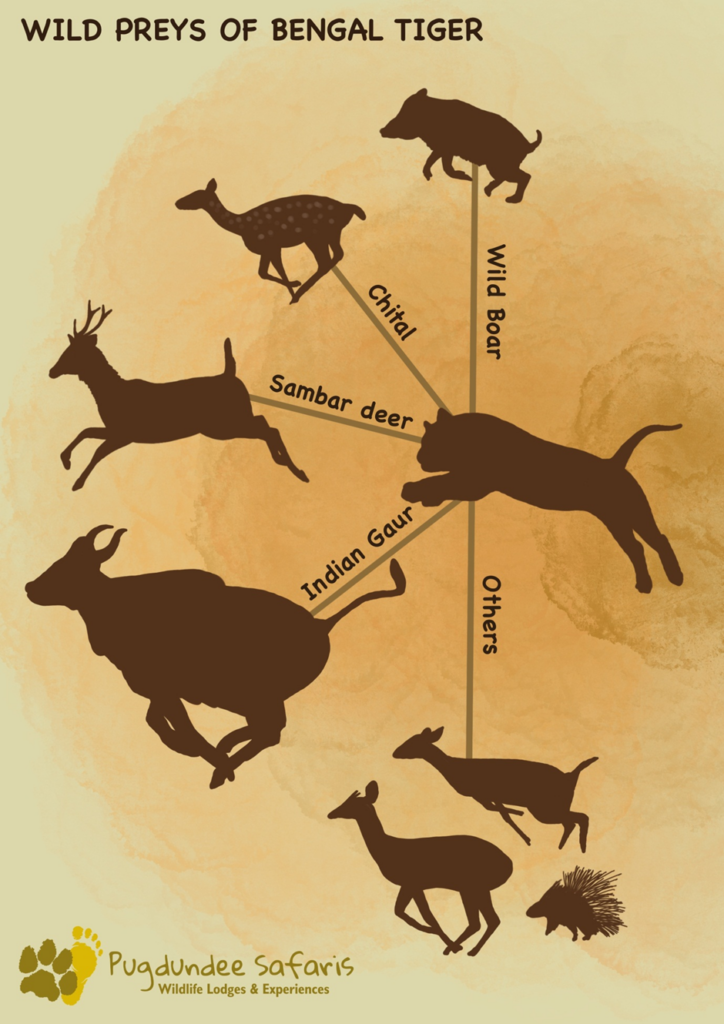
As carnivores, Bengal tigers primarily feed on large mammals. Their diet includes:
•Deer species, such as Sambar deer and Spotted deer (Chital)
•Wild boar
•Bison
* Blue Bull
•Occasionally, smaller animals like monkeys, birds, or hares
Tigers are skilled hunters. They use their sharp claws and strong jaws to take down prey, often ambushing them from dense cover. Bengal tigers hunt mostly at night and rely on their excellent night vision to spot prey. On average, a tiger eats around 8 to 10 kg of meat a day but can consume up to 40 kg in one sitting after a successful hunt.
HOW MANY BENGAL TIGERS ARE LEFT IN THE WORLD?
As of the last global count, around 4,500 Bengal tigers remain in the wild, with India being home to the majority of them. Bangladesh, Nepal, and Bhutan also have small populations. Conservation efforts, including anti-poaching measures and habitat restoration, are vital in ensuring that these numbers keep increasing in the future.
WHAT IS THE LENGTH BENGAL TIGERS?

Bengal tigers are one of the largest tiger subspecies. Adult male Bengal tigers can reach lengths of 9 to 10 feet from head to tail. Females are slightly smaller, measuring about 8 to 9 feet. Their long, powerful bodies are built for speed and strength, enabling them to cover large distances and take down large prey.
ROLE OF BENGAL TIGERS IN THE ECOSYSTEM
Tigers are apex predators, meaning they are at the top of the food chain. By keeping the populations of herbivores like deer and wild boar in check, tigers maintain a balance in the ecosystem. Without tigers, the populations of these prey species would grow uncontrollably, leading to overgrazing and the destruction of vegetation, which could affect other wildlife.
In this way, tigers indirectly help maintain the health of forests and grasslands. This also supports other species, including birds, smaller mammals, and insects. Tigers are known as keystone species because their presence has a significant impact on the overall ecosystem.
Written by Vishal Sharma, Naturalist at Pugdundee Safaris

